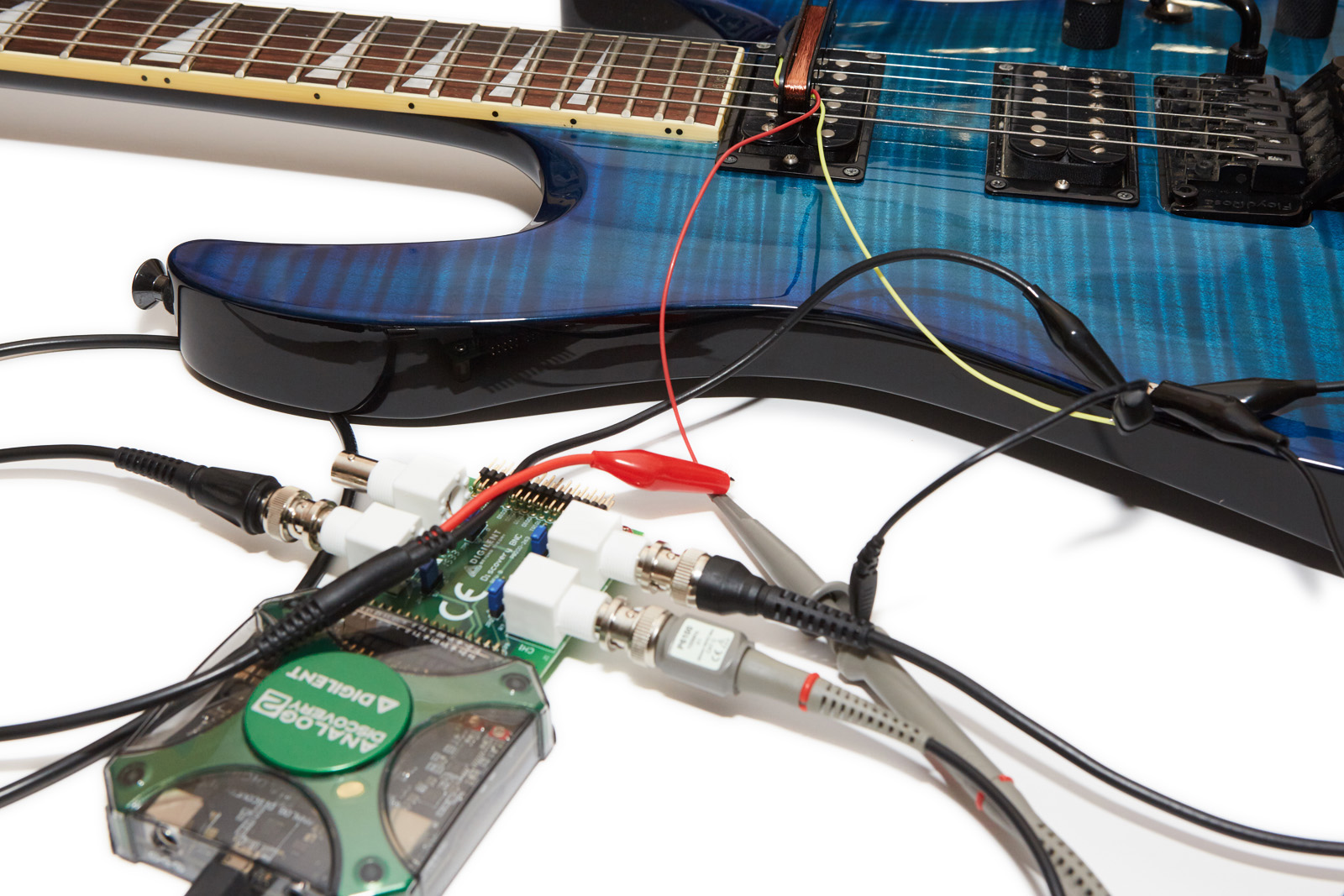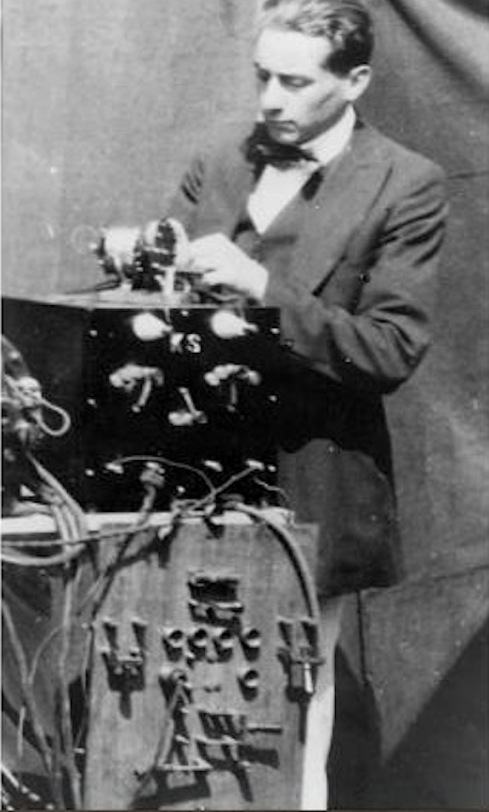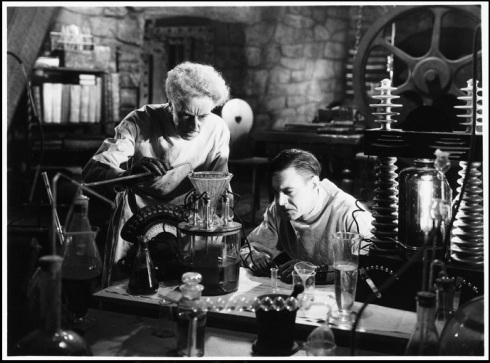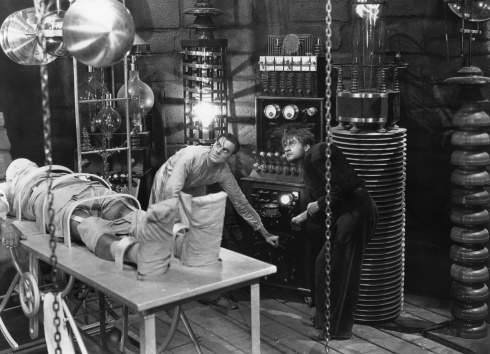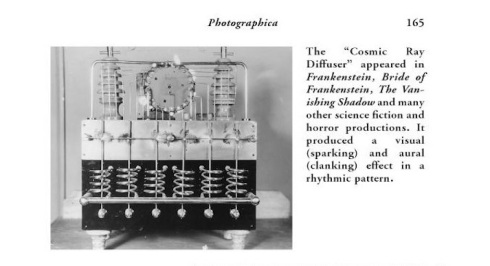Dix_
Junior Member
- Joined
- Apr 22, 2019
- Messages
- 12
- Reaction score
- 3
- Guild Total
- 3
NOTE: Due to the 10,000 character limit I've had to split this post into 2 parts. Also, I guess you need a certain number of posts before your posts can go live instantly. So, for those of you hoping for actual physical evidence, hold onto your shorts, that's in Part 2
Over the years I've seen questions now & then about what a good replacement for a bad XR7 pickup might be, or what one sounds like.
Since Gary alluded to it a bit ago in another topic, I figured I might as well go ahead and give everyone else here my case for the XR7 pickup being nothing more than the Dimarzio Super2 with a set of different looking polepieces.
That conversation was a part of a greater one that led to me being the new caretaker for the blue '82 X-79 featured on his website. I now have a trio of X-79s. 2 genuine excellent condition "survivors" (including Gary's), and the battle worn "player" that I play on a semi-regular basis with the usual headstock repair, and the finish literally worn off the neck in places.
Now, let me start by saying that I'm by no means a pickup expert. However, I do know just enough about electronics to be really, really dangerous.... Meaning, I'm just dumb enough to have something go "poof" when I turn it on, & then be able to follow a schematic just enough to figure out where I effed it up & fix it.
That coupled with the fact that in a former 1980s life I spent enough time as a bass-player-turned-live-concert-sound-engineer to learn just a little about how all that electron-flow stuff related to what moves our auditory receptacles and the sometimes shapely backsides of certain females of the species.
Also, perhaps just as important as all that, I'm old enough to have been around back then with just enough technical curiosity to be paying attention. Because, in my mind, just as important to the actual physical similarities & the numbers, is the historical evidence & circumstances of the time.
For those of you who prefer to sleep through history, feel free to skip down to the numbers & pictures below in part 2.... if it’s there... if it isn't yet, go take a nap & come back later. Suffice to say that, IMO, you can't approach a 1970's mystery with a 21st century mindset. If you weren't alive back in the 1970's and/or don't know anything about the history or the times, then maybe the 1st part of this will help you make some sense of how the reality of 2019 bears little meaning in what happened a full 40 years ago, when the whole replacement pickup industry was still crapping in it's diapers.
On that note, for those of you who might care, I related an abbreviated version of the history to Gary, which I'll expand on here.
Begin dream sequence....
The year is 1978. A young guitar player sees an ad in a magazine that his rock star hero uses a certain pickup in his guitars. He calls his local music store, orders a pair of the pickups, and then installs them in his cheap import Les Paul copy. He plugs in the guitar expecting magic. He gets no real apparent difference from the pickups that he took out of it.
But, why????
Return to present day....
As we sit here in 2019, your options for pickups are nearly endless. Dimarzio, Duncan, EMG, the list goes on... and each of them has dozens, or even hundreds, of models. All in minute varying degrees of dark to bright, mid-scooped to mid-boosted, and outputs from tens of millivolts to well over half a volt.
20, or even 30, years ago the situation wasn't really all that much worse. Dimarzio's 1989 catalog featured 17 different humbuckers & 11 different single coil options.
But, if we charge up the flux capacitor, jump in the Wayback Machine, & drop ourselves in the middle of the 1970s it was a whole different ballgame.
Prior to 1976 the aftermarket pickup market was pretty much non-existent. If you had a pickup that went bad or wanted "something different" back then you had very few choices... You salvaged one out of a repair shop bone pile, ordered a replacement from the manufacturer (which may not have been possible with some odd/off brand guitars), or you knew someone who could rewind it for you. And you could count those guys on the fingers of one hand. They had names like Bill Lawrence, Larry Dimarzio, & Seymour Duncan. & they were busy guys with a pretty exclusive clientele... I hope you knew somebody, who knew somebody, who... well... you get the idea.
In Dimarzio's case he was hand winding custom pickups in his Staten Island shop. The first being the now famous Super Distortion. As he relates it, high-gain amps just didn't exist in the early 70s. To get that real "high gain" sound that we all became familiar with you put a boost pedal in front of the amp or jumpered the channels of your Marshall. The Super Distortion was designed for one thing... to put out twice the voltage of the usual humbuckers of the day & push the front end of the amp harder. Marshall concocting the higher gain single channel 2203 & 2204 was still a couple years away. The formula was pretty straightforward, use a stronger magnet (ceramic), pile on copious wraps of wire & presto... more voltage output... not exactly rocket science.
As luck would have it, one of his former collage buddies was the bass player of a New York band that was starting to get some national traction. Yup, it was Gene Simmons who introduced Larry Dimarzio to his lead guitarist Ace Frehley. And the rest is, well.... KISStory.
Next thing you know, this crazy Californian named Bernie Rico calls, he wants to know if you can make that pickup with a 4-wire cable so he can use it with a series/parallel switch. This was the dawn of the "Dual Sound" pickup and a 12-year relationship with BC Rich guitars.
Take that pickup, give it to a kid from Berklee who's just landed a job playing alongside Chick Corea in Return To Forever, & the jazz world starts calling in.
OK, so lets fast forward a couple years... business has grown pretty quick in the little Staten Island shop. In addition to the Super Distortion/Dual Sound, there's now a direct Gibson replacement based off of Dimarzio's own 1959 Les Paul called the PAF, and an even higher output humbucker but that one isn't quite ready for primetime just yet, it needs some tweaking (that'll be the X2N). There's also the Gibson "EB" sized bass pickup design kicking around that Simmons was using, as well as a couple single coil Strat replacements currently being wound. He starts thinking maybe this whole replacement pickup thing, could be a thing...
Dimarzio decides to take the next logical step & start marketing replacement pickups to the rest of the general guitar playing world. And oh, by the way, just coincidently that other guy, Seymour Duncan, out on the west coast is in near the exact same boat... and the aftermarket pickup industry as we now know it was born.
Not too long after this point Kiss' other guitar player wants something with more high end in it than the Super Distortion. Or, as he put it in a 1978 Guitar Player magazine interview, "Like a PAF, only hotter".
In another more recent interview about his preferred guitar tone, "I like jangly guitars, but it still has to be able to rattle my nuts".
Yes boys & girls, that's a quote.

And thus, the "Super II" was concocted. OK, so it's not as Stanley alludes, an over-wound PAF. That trick will have to wait for some Dutch kid named Van Halen to conjure up. Nope, the magnet is ceramic, not alnico. The reality is, it's just an under-wound Super Distortion. No magic really, same magnet, same bobbins, same wire, just less of it.
In fact, all of Dimarzio's humbucking pickups of this era used the same wire, bobbins, & nickel plated setscrews for polepieces. The difference was simply the number of turns of wire wrapped around the bobbins. Except in the case of the PAF, that got an alnico magnet & polepieces that more resembled Gibson's. Not a lot of ultra-secret tricky stuff going on. The process of being able to carefully & perfectly sculpt the exact sonic signature of a pickup to the nth degree was still quite a few years off.
Now, for anyone wanting to know what a Super2 (or an XR7, since that's what we're accusing it of also being) sounds like, grab a copy of Paul Stanley's 1978 solo album. Super2 loaded guitars are all over it (which he stated in that same GP interview). Except for most of the solos, the majority of which were done by the now famous Kiss "fifth wheel" Bob Kulick. That noted, there are a few done by Paul himself, & the difference between Kulick's Les Paul & Stanley's solos are sonically obvious. The outro solo of "Hold Me, Touch Me" is a particular favorite of mine for what a Super2 can sound like in solo mode.
Other later perpetrators of the Super-II sound were Lita Ford, & Quiet Riot's Carlos Cavazo.
So, it's now 1978 and Dimarzio has grown to a 16 page catalog that's added "P" & "J" style bass pickups, a couple acoustic models, & a Tele replacement. But the humbucker lineup still consists of the same 4 options... well, OK, 3 actually, with a 4 wire option on one of 'em. Your endorsers list reads like a Who's Who of pop & rock radio. You've got a pretty good thing going, & your reputation has gotten the attention of the entire guitar industry... even if you are still something of a "small business". Remember, we're not talking about a multi-million dollar company here yet, with hundreds of employees. Just a small company chugging along making handfuls of pickups at a time. Super fast computer controlled winding machines don't exist yet. The machines that do exist are still manually operated here.
(to be continued...)
Over the years I've seen questions now & then about what a good replacement for a bad XR7 pickup might be, or what one sounds like.
Since Gary alluded to it a bit ago in another topic, I figured I might as well go ahead and give everyone else here my case for the XR7 pickup being nothing more than the Dimarzio Super2 with a set of different looking polepieces.
That conversation was a part of a greater one that led to me being the new caretaker for the blue '82 X-79 featured on his website. I now have a trio of X-79s. 2 genuine excellent condition "survivors" (including Gary's), and the battle worn "player" that I play on a semi-regular basis with the usual headstock repair, and the finish literally worn off the neck in places.
Now, let me start by saying that I'm by no means a pickup expert. However, I do know just enough about electronics to be really, really dangerous.... Meaning, I'm just dumb enough to have something go "poof" when I turn it on, & then be able to follow a schematic just enough to figure out where I effed it up & fix it.
That coupled with the fact that in a former 1980s life I spent enough time as a bass-player-turned-live-concert-sound-engineer to learn just a little about how all that electron-flow stuff related to what moves our auditory receptacles and the sometimes shapely backsides of certain females of the species.
Also, perhaps just as important as all that, I'm old enough to have been around back then with just enough technical curiosity to be paying attention. Because, in my mind, just as important to the actual physical similarities & the numbers, is the historical evidence & circumstances of the time.
For those of you who prefer to sleep through history, feel free to skip down to the numbers & pictures below in part 2.... if it’s there... if it isn't yet, go take a nap & come back later. Suffice to say that, IMO, you can't approach a 1970's mystery with a 21st century mindset. If you weren't alive back in the 1970's and/or don't know anything about the history or the times, then maybe the 1st part of this will help you make some sense of how the reality of 2019 bears little meaning in what happened a full 40 years ago, when the whole replacement pickup industry was still crapping in it's diapers.
On that note, for those of you who might care, I related an abbreviated version of the history to Gary, which I'll expand on here.
Begin dream sequence....
The year is 1978. A young guitar player sees an ad in a magazine that his rock star hero uses a certain pickup in his guitars. He calls his local music store, orders a pair of the pickups, and then installs them in his cheap import Les Paul copy. He plugs in the guitar expecting magic. He gets no real apparent difference from the pickups that he took out of it.
But, why????
Return to present day....
As we sit here in 2019, your options for pickups are nearly endless. Dimarzio, Duncan, EMG, the list goes on... and each of them has dozens, or even hundreds, of models. All in minute varying degrees of dark to bright, mid-scooped to mid-boosted, and outputs from tens of millivolts to well over half a volt.
20, or even 30, years ago the situation wasn't really all that much worse. Dimarzio's 1989 catalog featured 17 different humbuckers & 11 different single coil options.
But, if we charge up the flux capacitor, jump in the Wayback Machine, & drop ourselves in the middle of the 1970s it was a whole different ballgame.
Prior to 1976 the aftermarket pickup market was pretty much non-existent. If you had a pickup that went bad or wanted "something different" back then you had very few choices... You salvaged one out of a repair shop bone pile, ordered a replacement from the manufacturer (which may not have been possible with some odd/off brand guitars), or you knew someone who could rewind it for you. And you could count those guys on the fingers of one hand. They had names like Bill Lawrence, Larry Dimarzio, & Seymour Duncan. & they were busy guys with a pretty exclusive clientele... I hope you knew somebody, who knew somebody, who... well... you get the idea.
In Dimarzio's case he was hand winding custom pickups in his Staten Island shop. The first being the now famous Super Distortion. As he relates it, high-gain amps just didn't exist in the early 70s. To get that real "high gain" sound that we all became familiar with you put a boost pedal in front of the amp or jumpered the channels of your Marshall. The Super Distortion was designed for one thing... to put out twice the voltage of the usual humbuckers of the day & push the front end of the amp harder. Marshall concocting the higher gain single channel 2203 & 2204 was still a couple years away. The formula was pretty straightforward, use a stronger magnet (ceramic), pile on copious wraps of wire & presto... more voltage output... not exactly rocket science.
As luck would have it, one of his former collage buddies was the bass player of a New York band that was starting to get some national traction. Yup, it was Gene Simmons who introduced Larry Dimarzio to his lead guitarist Ace Frehley. And the rest is, well.... KISStory.
Next thing you know, this crazy Californian named Bernie Rico calls, he wants to know if you can make that pickup with a 4-wire cable so he can use it with a series/parallel switch. This was the dawn of the "Dual Sound" pickup and a 12-year relationship with BC Rich guitars.
Take that pickup, give it to a kid from Berklee who's just landed a job playing alongside Chick Corea in Return To Forever, & the jazz world starts calling in.
OK, so lets fast forward a couple years... business has grown pretty quick in the little Staten Island shop. In addition to the Super Distortion/Dual Sound, there's now a direct Gibson replacement based off of Dimarzio's own 1959 Les Paul called the PAF, and an even higher output humbucker but that one isn't quite ready for primetime just yet, it needs some tweaking (that'll be the X2N). There's also the Gibson "EB" sized bass pickup design kicking around that Simmons was using, as well as a couple single coil Strat replacements currently being wound. He starts thinking maybe this whole replacement pickup thing, could be a thing...
Dimarzio decides to take the next logical step & start marketing replacement pickups to the rest of the general guitar playing world. And oh, by the way, just coincidently that other guy, Seymour Duncan, out on the west coast is in near the exact same boat... and the aftermarket pickup industry as we now know it was born.
Not too long after this point Kiss' other guitar player wants something with more high end in it than the Super Distortion. Or, as he put it in a 1978 Guitar Player magazine interview, "Like a PAF, only hotter".
In another more recent interview about his preferred guitar tone, "I like jangly guitars, but it still has to be able to rattle my nuts".
Yes boys & girls, that's a quote.
And thus, the "Super II" was concocted. OK, so it's not as Stanley alludes, an over-wound PAF. That trick will have to wait for some Dutch kid named Van Halen to conjure up. Nope, the magnet is ceramic, not alnico. The reality is, it's just an under-wound Super Distortion. No magic really, same magnet, same bobbins, same wire, just less of it.
In fact, all of Dimarzio's humbucking pickups of this era used the same wire, bobbins, & nickel plated setscrews for polepieces. The difference was simply the number of turns of wire wrapped around the bobbins. Except in the case of the PAF, that got an alnico magnet & polepieces that more resembled Gibson's. Not a lot of ultra-secret tricky stuff going on. The process of being able to carefully & perfectly sculpt the exact sonic signature of a pickup to the nth degree was still quite a few years off.
Now, for anyone wanting to know what a Super2 (or an XR7, since that's what we're accusing it of also being) sounds like, grab a copy of Paul Stanley's 1978 solo album. Super2 loaded guitars are all over it (which he stated in that same GP interview). Except for most of the solos, the majority of which were done by the now famous Kiss "fifth wheel" Bob Kulick. That noted, there are a few done by Paul himself, & the difference between Kulick's Les Paul & Stanley's solos are sonically obvious. The outro solo of "Hold Me, Touch Me" is a particular favorite of mine for what a Super2 can sound like in solo mode.
Other later perpetrators of the Super-II sound were Lita Ford, & Quiet Riot's Carlos Cavazo.
So, it's now 1978 and Dimarzio has grown to a 16 page catalog that's added "P" & "J" style bass pickups, a couple acoustic models, & a Tele replacement. But the humbucker lineup still consists of the same 4 options... well, OK, 3 actually, with a 4 wire option on one of 'em. Your endorsers list reads like a Who's Who of pop & rock radio. You've got a pretty good thing going, & your reputation has gotten the attention of the entire guitar industry... even if you are still something of a "small business". Remember, we're not talking about a multi-million dollar company here yet, with hundreds of employees. Just a small company chugging along making handfuls of pickups at a time. Super fast computer controlled winding machines don't exist yet. The machines that do exist are still manually operated here.
(to be continued...)
Last edited:
